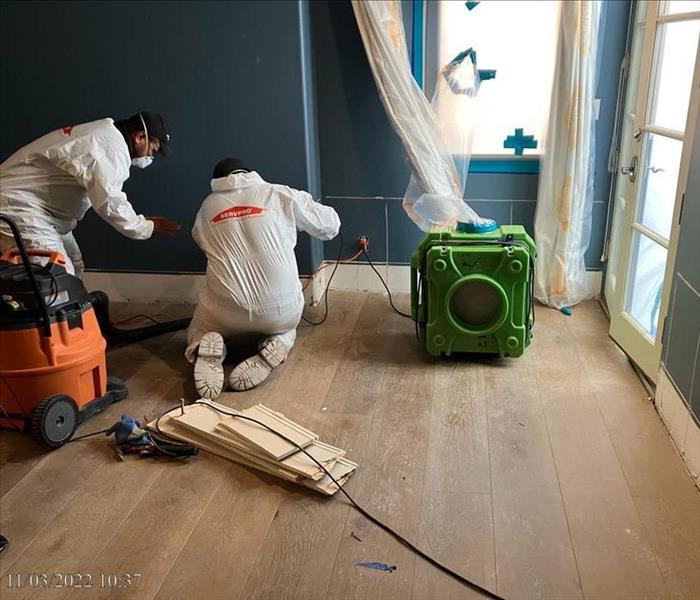The Role of Humidity in Mold Growth
3/13/2024 (Permalink)
 In this blog, we will explore the relationship between mold and humidity, highlighting the importance of controlling humidity levels.
In this blog, we will explore the relationship between mold and humidity, highlighting the importance of controlling humidity levels.
Humidity plays a significant role in the growth and proliferation of mold. Understanding how humidity affects mold growth is crucial for homeowners and property managers who seek to prevent or remediate mold issues. In this blog, we will explore the relationship between mold and humidity, highlighting the importance of controlling humidity levels to prevent mold growth and the need for professional mold restoration and remediation services, like SERVPRO®.
Mold and Humidity: A Perfect Match
Mold spores are naturally present in the environment. However, they can only grow and multiply when moisture is available. Humidity, defined as the amount of moisture in the air, provides the necessary moisture for mold to thrive. Mold typically thrives in environments with a relative humidity (RH) of 70 percent or higher.
Mold Growth Triggered by High Humidity
When the humidity level is high, mold spores can land on surfaces and find the moisture they need to germinate and grow. High humidity levels create an ideal environment for mold growth, especially in areas prone to moisture, such as bathrooms, kitchens, basements, and areas affected by water leaks or flooding.
Moisture Condensation and Mold Growth
Excessive humidity can lead to moisture condensation on surfaces. Condensation occurs when warm, moist air comes into contact with cooler surfaces, causing the moisture in the air to transform into water droplets. Condensation promotes mold growth, particularly on surfaces like windows, walls, and ceilings.
Controlling Humidity to Prevent Mold Growth
To prevent mold growth in your home or property, it is important to control humidity levels. Here are some helpful tips:
- Use Dehumidifiers: Dehumidifiers are effective in reducing humidity levels in enclosed spaces. Place dehumidifiers in damp areas, especially basements and bathrooms, to control excess moisture and inhibit mold growth.
- Ventilation: Ensure proper ventilation in high-humidity areas, such as bathrooms and kitchens. Use exhaust fans and open windows to promote airflow and reduce moisture buildup.
- Monitor Humidity Levels: Invest in a hygrometer to monitor humidity levels in your home. The optimal humidity range for preventing mold growth is between 30% to 50%. If the humidity exceeds this range, implement measures to lower it, such as using a dehumidifier.
- Address Water Leaks Promptly: Water leaks provide a continuous source of moisture, creating favorable conditions for mold growth. Promptly repair any leaks and dry affected areas thoroughly.
The Importance of Professional Mold Restoration and Remediation
Despite taking preventive measures, mold growth can still occur, especially in cases of prolonged or unnoticed moisture exposure. When dealing with extensive or persistent mold growth, it is crucial to engage in professional mold restoration and remediation services, such as SERVPRO.
Trained mold remediation professionals have the expertise, tools, and techniques to effectively assess, contain, remove, and mitigate mold issues. They can identify the source of the moisture problem, eliminate the mold growth, and restore the affected areas to their pre-mold condition.
Understanding the relationship between mold and humidity is essential for preventing mold growth and maintaining a healthy indoor environment. By controlling humidity levels, monitoring for moisture buildup, and promptly addressing any water leaks, you can inhibit the conditions that promote mold growth. In cases of extensive mold growth, professional mold restoration and remediation services, like those offered by SERVPRO®, can help effectively mitigate the issue and restore your property.






 24/7 Emergency Service
24/7 Emergency Service